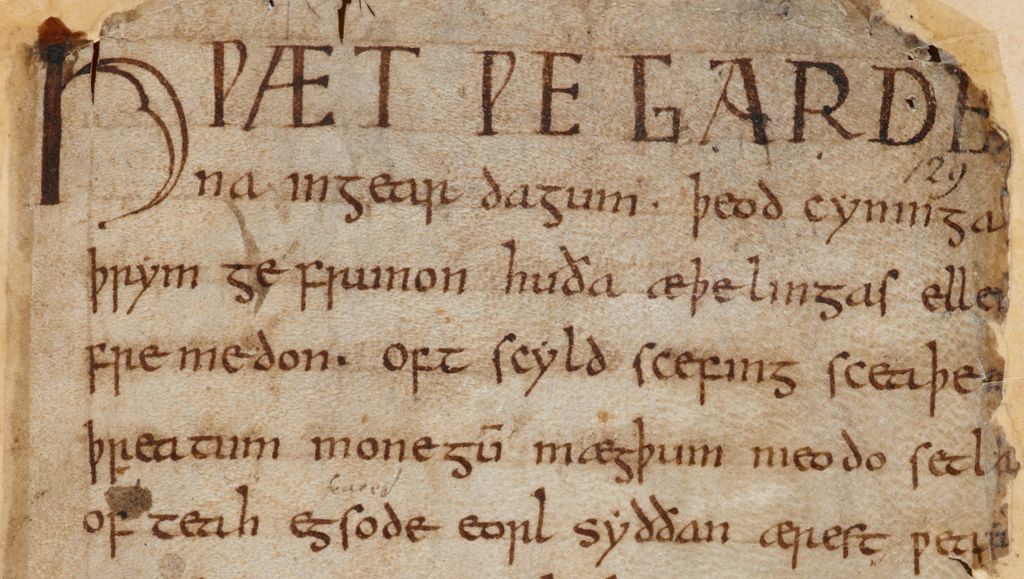The Grolier Club in New York City was kind enough to allow us to photograph and reproduce at scale the closet where they store three of the original cases in which the collector Thomas Phillipps stored his books and papers. The reproduction was the centerpoint of the recent exhibition at the Beinecke Library that focused on Phillipps’ legacy through his collecting and his printing activities. Likely the most popular part of the exhibit, the photograph caused visitors to wonder and archivists to cringe.

When the Grolier purchased the cases, they were filled to overcapacity with the charters that you now see pouring out of the cases and stacked on top. To ensure that there were no important charters buried in the mass of documents, the Grolier unpacked the chests to examine the manuscripts. When they tried to repack them they realized that it was impossible to replace them as they had been when they had arrived, and so the extra charters were placed on top of the cabinets.
Despite the frightening appearance, the materials inside have been recorded and everything is stored in an appropriate manner. Most impressive is that the Phillipps Closet reveals more about the man in a way that transcends written descriptions. Phillipps was justly famous for rescuing thousands of charters that were being discarded and used to make glue. By paying a small sum (more than could be made by boiling them down) he collected these records when the rest of the world was destroying them. But Phillipps was an inconsistent collector and while he loved lists and catalogs, he rarely had the discipline to separate, label, and catalog each charter he received. Instead they accumulated in these chests that he had specially built.
The chests themselves illuminate Phillipps’ personality. One of his most overwhelming fears was that fire would destroy his collection. He was not wrong to worry; before incandescent bulbs, people read by the light of oil lamps and candles, which often caused fires. Once a fire began to burn books, they acted as kindling resulting in the destruction of entire libraries. The Great Cotton Fire on 23 October 1731 destroyed many famous manuscripts and damaged others, of note the only copy of Beowulf, whose fragile pages have been the object of conservation since the fire.

(The opening words of Beowulf, beginning “Hwæt” (“Listen!”): London, British Library, MS Cotton Vitellius A XV, f. 132r.). Image from bl.com)
Sir Robert Cotton (1571-1631) was, before Phillipps, the most important collector in English history and after his death his library became the core of the British Museum’s medieval book collection in 1753.*

(One manuscript, BL Royal MS 9 C X was left unconserved after the fire to attest to the destruction that took place.)
To prevent a similar tragedy happening to his own materials, Phillipps had these boxes built that had handles on either end so that in the event of fire, the boxes could be swiftly carried away from the flames. Phillipps, however, didn’t consider the number of boxes he accumulated nor their substantial weight when filled with books. With only himself, his invalid wife and his three daughters, it would have been impossible for him to remove more than a few crates from his house during a fire. Luckily for Phillipps and for posterity, his collection did not suffer any divine disasters (only those Phillipps inflicted on himself and his descendants).
We would like to thank the Grolier Club for working with us to have the pictures of the closet taken. In addition to all of Phillipps’ printed materials, the Grolier Club possesses Phillipps’ personal copy of his catalog with his manuscript annotations. Special thanks to Meghan Constantinou for presenting her enthralling paper about Phillipps and his collection, entitled “The Phillipps Closet: A Cautionary Tale,” on February 4, 2019 at the Beinecke Library.
Footnotes
*For an account of what was lost in the Cotton Fire, see Prescott, A. (1997). “‘Their Present Miserable State of Cremation’: The Restoration of the Cotton Library.” In C. J. Wright (Ed.), Sir Robert Cotton as Collector: Essays on an Early Stuart Courtier and his Legacy (pp. 391-439). London: The British Library.
Bibliography
Main photo of the closet used for the exhibit was taken by Robert Lorenzson Photography of Fine Art & Antiques 501 East 87th Street, apt. 11G | New York, NY 10128 Tel (212) 861-3135 | Email: rlorenzson@nyc.rr.com
The close up of the closet is from: https://www.nytimes.com/2019/01/17/arts/design/book-lovers-grolier-club…..
“ ‘Their Present Miserable State of Cremation’: the Restoration of the Cotton Library” by Andrew Prescott, in Sir Robert Cotton as Collector: Essays on an Early Stuart Courtier and His Legacy (1997) edited by C. J. Wright. [On manuscripts damaged by the Cotton Fire]
The wonderful exhibition catalog of the Grolier’s Middle Hill Press documents their holdings, the result of a very generous gift by Harrison D. Horblit: Holzenberg, E., & Tanselle, G. T. (1997). The Middle Hill Press. Grolier Club.
